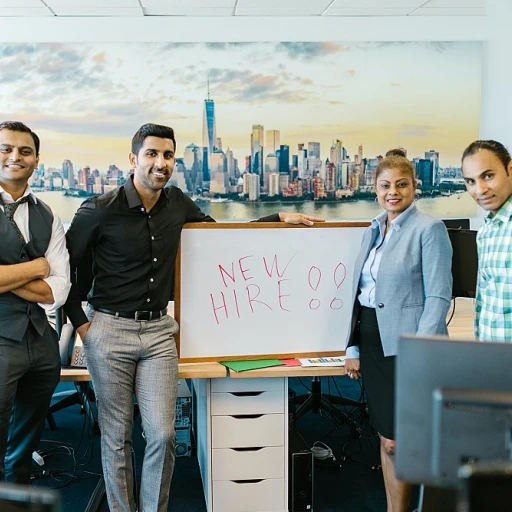Understanding the Fear of Speaking Up
Exploring the Causes and Impacts of Staying Silent
Understanding the fear of speaking up in the workplace is crucial for leaders aiming to cultivate a courageous culture. Many individuals, even within successful teams, experience hesitation in voicing their ideas or concerns. This apprehension can stem from previous negative experiences, an intimidating work culture, or a fear of conflict with team members. While one might think that this silence only affects the individual, it has a far-reaching impact on the entire organization. When leaders fail to recognize these muted voices, they risk missing out on innovative ideas and practical solutions. As a result, challenges in problem solving persist, and the potential growth of both the individual and the team is stunted. For instance, in environments where workplace conflict is prevalent, team members may retreat rather than stepping forward with their perspectives. This silence hinders the flow of diverse ideas that fuel creativity and improvement within customer-focused initiatives. Recognizing this fear is the first step in addressing it. Leaders need to identify signs of reluctance in their team members and understand the significance of fostering open, courageous conversations. Embracing a culture that inspires people to speak their minds not only benefits individual growth but also enhances overall leadership development. For those interested in learning more about efficient ways to address this issue, explore how to boost employee learning in your company, where practical strategies are discussed to empower employees and build a strong, vocal team of problem solvers.Karin Hurt's Approach to Courageous Conversations
Cultivating Courageous Conversations for Leaders and Teams
Karin Hurt’s approach to fostering open and courageous conversations starts with leadership development that empowers leaders to address workplace conflicts effectively. Her ideas emphasize that leaders need to be equipped with practical tools and techniques to engage their team members, encouraging them to become micro innovators and active problem solvers within their teams. In her book "Courageous Cultures," Hurt highlights the importance of leaders creating an environment where people feel comfortable sharing their thoughts and ideas without fear of negative repercussions. This involves building a culture where everyone from customer advocates to team members is considered a vital contributor to solving problems, fostering a courageous culture where speaking up is the norm rather than the exception. To navigate challenges and inspire courage in the workplace, leaders must act as facilitators rather than gatekeepers—serving as guides for team members who might struggle with the fear of speaking up. A practical emphasis is put on developing leadership skills, wherein the focus is on enhancing communication techniques and harnessing the power of diverse perspectives. To learn more about mastering these essential soft skills, you might find valuable insights in resources dedicated to mastering soft skills through continuous learning, aligning well with Karin’s vision of leadership that embraces innovation and inclusive idea-sharing in teams.The Role of Continuous Learning in Building Confidence
Embracing Continuous Learning to Build Confidence
In the realm of leadership, continuous learning plays a pivotal role in fostering a culture of open communication and problem solving. Karin Hurt, an expert in leadership development, often underscores the importance of embracing continuous learning as a means to bolster confidence among team members. When individuals engage in lifelong learning, they refine their ability to adapt to new situations, thus becoming more adept at tackling workplace conflict.
For leaders seeking to cultivate a culture where courageous conversations flourish, it's crucial to provide resources and opportunities for continuous growth. This enables team members to transform into problem solvers and micro innovators. By nurturing such a culture, leaders can help individuals become more effective in delivering innovative ideas and solutions.
One valuable approach is to incorporate effective training tools and techniques in the organizational framework. These tools serve as catalysts for enhancing communication skills, encouraging customer advocates, and ultimately, fostering a more engaged workforce.
Adopting continuous learning also means recognizing and addressing the unique needs of a diverse team. By understanding the varied learning styles and preferences within your team, you can tailor development initiatives to meet individual requirements. This commitment to personalized growth not only boosts confidence but also fosters a workplace environment where everyone feels valued and empowered to voice their ideas.
In conclusion, embracing continuous learning as a leadership tool is indispensable in building confidence and overcoming the fear of speaking up. This commitment to learning supports a courageous culture, encouraging leaders and team members alike to grow, innovate, and thrive within their organizational roles.
Creating a Safe Environment for Open Dialogue
Building a Culture for Courageous Conversations
Continuous learning plays a vital role in fostering a safe environment where team members feel empowered to voice their ideas and opinions. In a workplace where leadership prioritizes openness, leaders become facilitators of courageous conversations and cultivate a culture where everyone is heard. Incorporating strategies from Karin Hurt's insights, leaders can create an atmosphere that minimizes the fear of speaking up. A fundamental aspect is to recognize that workplace conflict and diverse perspectives are not problems, but opportunities for growth. Courageous cultures thrive when leaders view differing opinions as contributions to a broader dialogue. Creating this environment involves several practical steps:- Promote Psychological Safety: Ensure team members know they have the support of leadership to express their views without fear of negative consequences. When leaders actively encourage participation and acknowledge contributions, it builds confidence among team members.
- Encourage Micro-Innovators: Empower individuals by promoting a culture that values innovation and problem-solving. This enables team members, especially those who might hesitate to speak up, to see their roles as integral to the company's success.
- Utilize Feedback Loops: Regular feedback sessions can help bridge communication gaps. These sessions are tools for both leaders and team members to align on goals and expectations, thus enhancing trust and transparency.
- Host Courageous Conversations Workshops: Such workshops are practical tools to train team members in effective communication techniques. It builds their confidence through role-playing and real-world scenarios, helping them become better advocates for themselves and their ideas in meetings.
Practical Exercises to Enhance Communication Skills
Enhancing Communication Skills through Practical Exercises
Building confidence and fostering open dialogue in the workplace often requires a blend of knowledge and practical application. By engaging in specific exercises, team members can transform their fear of speaking up into strength. Here are some effective strategies to bolster communication skills:- Role-Playing Scenarios: Organizing role-playing exercises where individuals can act out common workplace scenarios can help dissolve the fear of speaking up. This method provides a safe space to explore various communication styles and problem-solving techniques without the pressure of real-world consequences.
- Feedback Sessions: Regular feedback sessions facilitate the growth of a courageous culture within teams. By encouraging honest and constructive feedback, leaders can empower their teams to become better communicators and problem solvers, thus nurturing micro-innovators and customer advocates.
- Public Speaking Workshops: Offering workshops focused on public speaking can drastically improve confidence. Techniques learned from Karin Hurt, a renowned speaker, can help individuals articulate their thoughts clearly and effectively in front of an audience, transforming them into fearless advocates for their ideas.
- Listening Drills: Improving one's ability to listen is just as crucial as speaking. Exercises that focus on active listening help participants understand others better, thereby fostering a more open and communicative work environment.
- Problem Solving Games: Engaging in team activities that revolve around problem-solving enhances collaborative skills. These activities also build trust among team members and help develop a culture of innovative thinking. Successful leaders, as highlighted by Hurt, understand the importance of problem-solving as a vital leadership development tool.
Real-Life Success Stories
Transformative Experiences in Speaking Up
For leaders stuck in a cycle of workplace conflict and fear speaking, real-life stories of transformation can be incredibly inspiring. When team members adopt courageous cultures, they can create spaces where ideas flow freely, leading to innovative problem-solving.
A pivotal moment shared by a leadership development professional highlights how fostering a culture of courageous conversations positively impacted their organization. By implementing practical tools and techniques from Karin Hurt’s approach, this leader empowered their team to become micro innovators, tackling challenges head-on.
The courageous environment allowed team members to voice their customer insights more effectively, enhancing their role as customer advocates. As they engaged in courageous dialogues, the teams built a dynamic exchange of ideas where diverse perspectives were celebrated, intimidating workplace barriers broke down, and communication thrived.
Following Hurt's principles, this organization reinforced the notion that leaders ought to work alongside their teams as facilitators, coaching them to overcome the fear of speaking up. The journey from reticence to expression culminated in a workplace where problem solvers embraced challenges, knowing their contributions were valued.
These stories not only exemplify the practical application of courageous speaking principles, but they also highlight how continuous learning and deliberate practice can empower individuals, transforming them into proactive contributors within their organizations. By fostering safe and open dialogues, leaders can harness the collective creativity of their teams, propelling them toward shared success.












